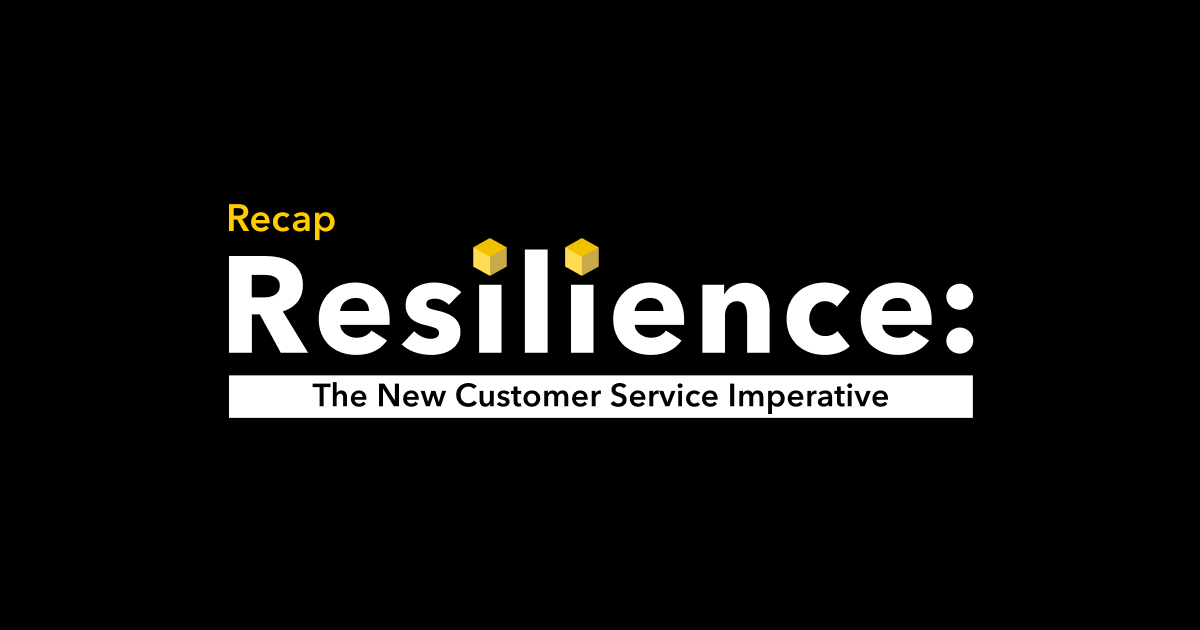As a principal analyst at Forrester and a contact-center expert, Ian Jacobs has had a front-row seat to the disruptive impact of COVID-19 on customer-service systems. As companies quickly deployed a remote workforce and introduced new technology, Ian has helped them look beyond the immediate needs of the present moment to the long-term realities of the new normal.
Our CEO, Mike de la Cruz, recently sat down with Ian for a 50-minute webinar entitled “Building the Customer Service Model You Want and Your Customers Need.” The webinar offered a 90-day framework to businesses seeking to build digital-first customer service models that are agile and resilient — even in the midst of unforeseen crises.
[WATCH WEBINAR: Building the Support Model You Want and Your Customers Need]
Accelerating digital transformation
In their discussion, Ian highlighted several shifts in labor models and communication processes resulting from the pandemic, such as hybrid workforces and asynchronous interactions. After applauding companies for accelerating investments in digital transformation, however, he recommended that they consider what they ultimately aim to achieve with new tools and services. Cost savings, while certainly a benefit, should not be the sole reason for a brand to move to digital-first models.
Ian’s advice for support leaders is that you should treat this crisis as an opportunity for a blank slate, allowing you to design the ideal remote workforce and workflow and interaction channels, rather than just replicating what you had in your brick-and-mortar contact centers. “Being digital-first provides efficiency to you as a brand, but it is in no way only about that efficiency. It’s actually about providing better experiences to your customers and to the people providing those services, whether they’re your full-time agents or whether they’re knowledge experts you bring into the organization to help serve your customers,” Ian said.
Decentralizing the contact center
Echoing Ian, Mike urged customer-service leaders to see the pandemic as a chance to rethink old-world contact centers. The rigidity of limited-capacity call centers cannot meet dynamic customer demands that fluctuate based on revised health and safety practices or market shifts. Instead, companies should invest in AI systems that know how to handle brand-new issues, backed by both a set of experts who continually update a shared knowledge base and a decentralized group of highly-trained traditional agents.
“To have a digital first model you need to have a decentralized labor model around the contact center,” Mike explained, “and a way to bring in skills and experienced talent in a way that’s flexible and dynamic and can deal with the ups and downs of demand that are occurring more and more now.”
90 days to digital transformation
Mike went on to share how to start on a course towards digital transformation in only 90 days, with a three-step plan designed to help companies think through the possibilities of what they can do digitally. “One way to get started with your plan is to find ways to offer a better customer experience to the consumers that are waiting in your phone queues. A practical solution is thinking about your IVR and phone volume and being able to offer certain customer segments in the phone tree an automatic answer based on their intent. At that point, you can take it from an offline interaction to an online interaction through your agent workforce,” Mike explained.
With this 90-day approach Mike described, IVR offers customers an SMS alternative, the customer is texted an automatic answer, and an expert (or agent) engages the customer if needed, rethinking the labor model and making the entire process more efficient. Mike notes, “What we see from customers is that there’s a huge opportunity to identify the relevant calls that can shift to digital as your first step. We see that by offering a good customer experience, a lot of consumers are taking that option because it has the potential to resolve an issue faster.”
This has certainly been a challenging season for contact-center professionals, but the drive to develop resilient customer-service models has never been stronger. To learn more about how your team can begin this process, reach out to us to schedule a demo and watch the full webinar here.
_________________________________
About Directly
COVID-19 has forced many in our industry to re-think how we provide customer support. Companies such as Microsoft, Samsung, Airbnb, and Autodesk are using Directly’s platform to deliver more automated and elastic customer support operations that are resilient, even in the face of a crisis. Our platform integrates with support channels to understand customer issues, automate common solutions, and engage community experts. This enables customer support leaders to resolve customer issues with the right mix of automation and human support, boosting customer satisfaction, while saving millions per year. Contact us to set up a demo of our platform today.



